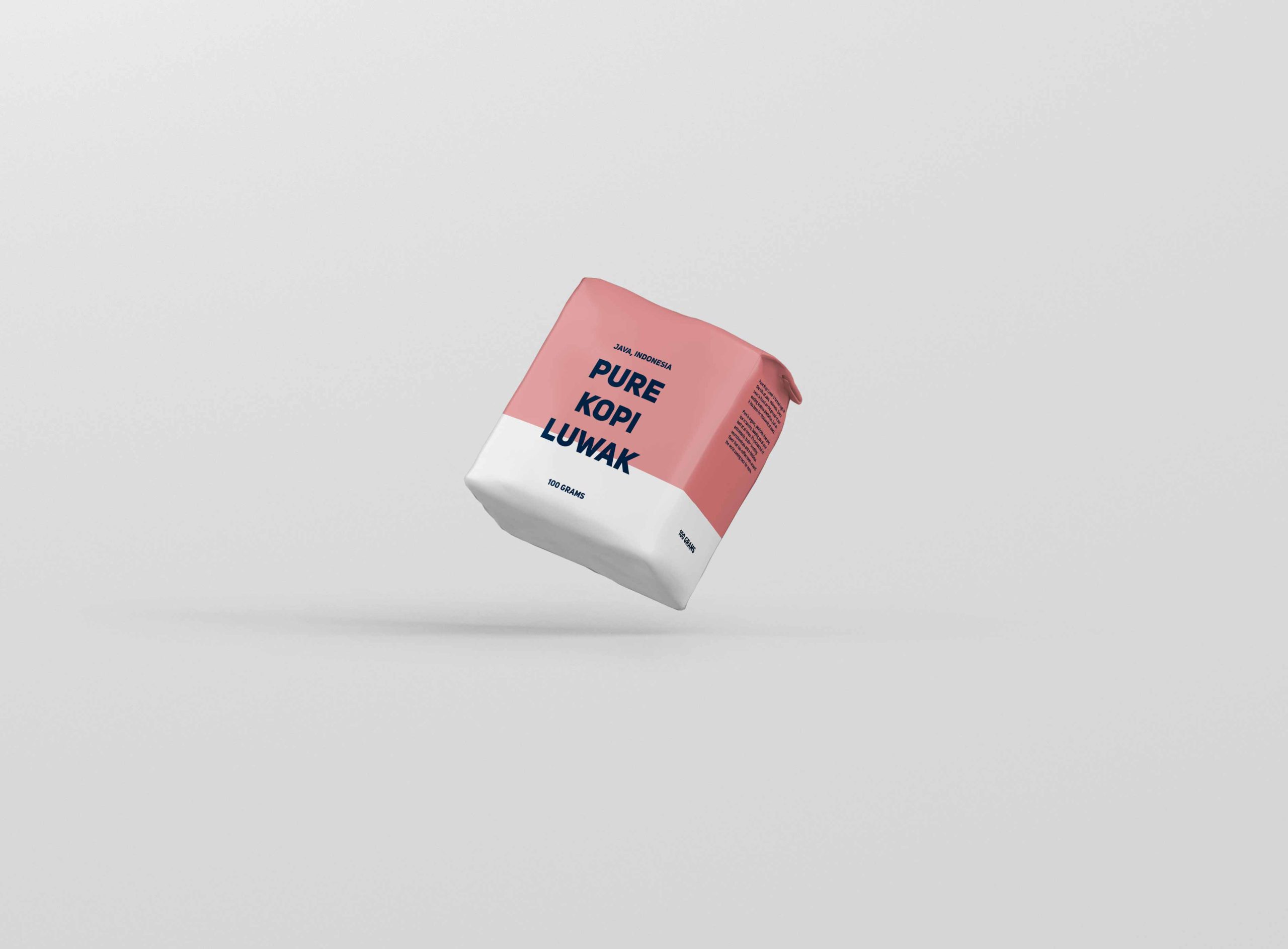If you take a look at the packaging of your favorite coffee, you’ll probably notice it says either 100% Arabica beans, Arabica blend or 100% Robusta beans. That’s because arabica and robusta are the two most prominent species of coffee beans produced and sold in the world, making up about 60% and 40% of the world’s total production respectively.
A June 2018 report by the U.S Department of Agriculture (USDA) forecasts that world coffee production for the 2017/18 fiscal year will reach 159 million bags of green coffee, of which 60% will be arabica and the rest will be robusta beans. But what’s the difference between arabica and robusta coffee beans, anyway?
Arabica coffee beans are those produced by a particular species of coffee plant called coffea arabica. The arabica bean is the most widely produced cultivar of coffee, with a “cultivar” being a species or variety of plant selected for cultivation. It is also believed that coffea arabica was the first species of coffee plant to be cultivated. The plant’s origin is usually attributed to Ethiopia and/or Yemen.
Robusta coffee beans, on the other hand, are coffee beans produced by the robusta variety of another species of coffee plant called coffea canephora. Some people mistakenly use the terms coffea canephora and coffea robusta as one and the same, but there’s a difference: robusta is one of the two varieties of coffea canephora, with the other known as nganda. Coffea robusta also originates from Africa, but from the western sub-Saharan part of the continent, in contrast to coffea arabica coming from the eastern side of Africa.
Both types of coffee plants belong to the same family, rubiaceae, but they have very distinct characteristics that set them apart.
Differences in Coffee Plants: coffea arabica vs. coffea robusta
Coffea arabica is a smaller, shorter shrub than coffea robusta. It prefers to grow in the cooler shade provided in many tropical countries by banana or cocoa plants. Coffea robusta, on the other hand, is taller, likes to grow in direct sunlight, and is much more resistant to certain types of pests than coffea arabica. This robustness is what gives the robusta plant its name.
As you can see from the images below, there is a noticeable difference in the blooms of arabica and robusta coffee plants. Arabica blooms have a slight ivory color and broader petals, while robusta blooms are a lighter white.
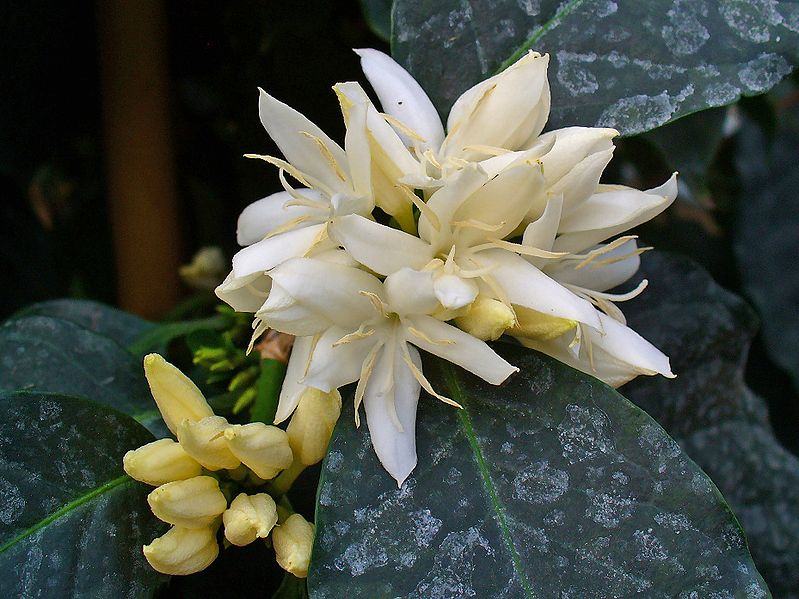
Coffea Arabica. Photo: H. Zell.
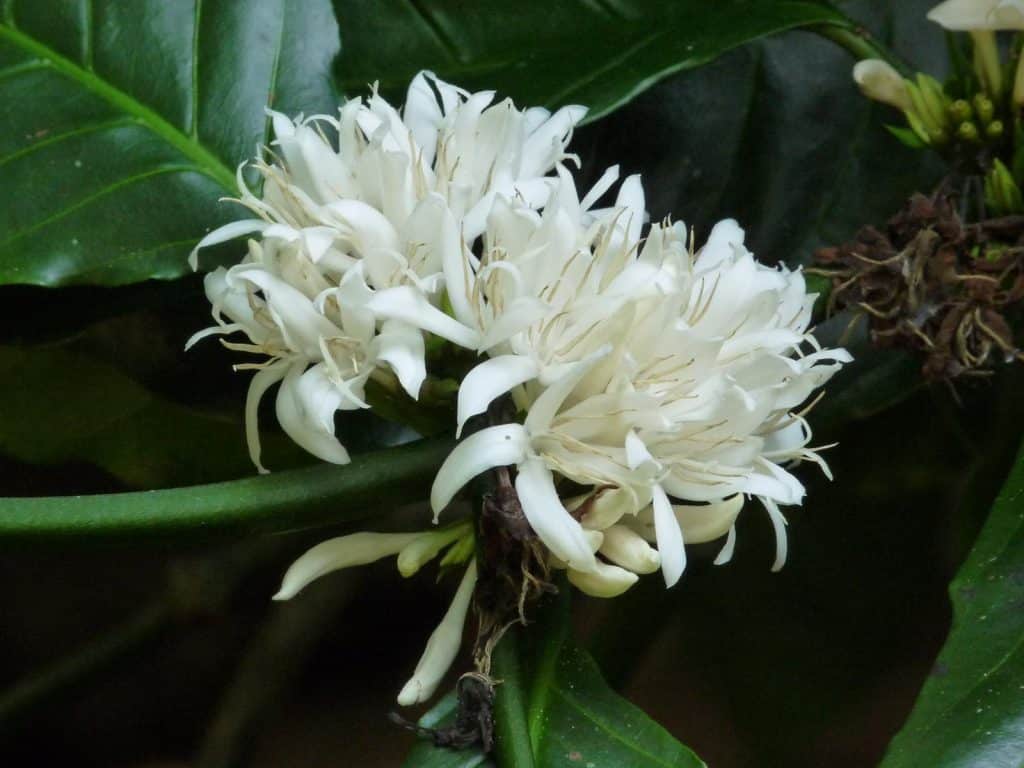
Coffea Robusta in bloom. Photo: Jee & Rani Nature Photography.
The coffee cherries of the two plants also display visible differences in shape, size and color. Robusta coffee cherries are smaller, rounder and almost spherical, while arabica coffee beans have a longer, slimmer, more oval shape. Most ripe arabica cherries are red, though some variants, like bourbon arabica, are actually yellow. All robusta cherries are red, though their color is much richer and darker.
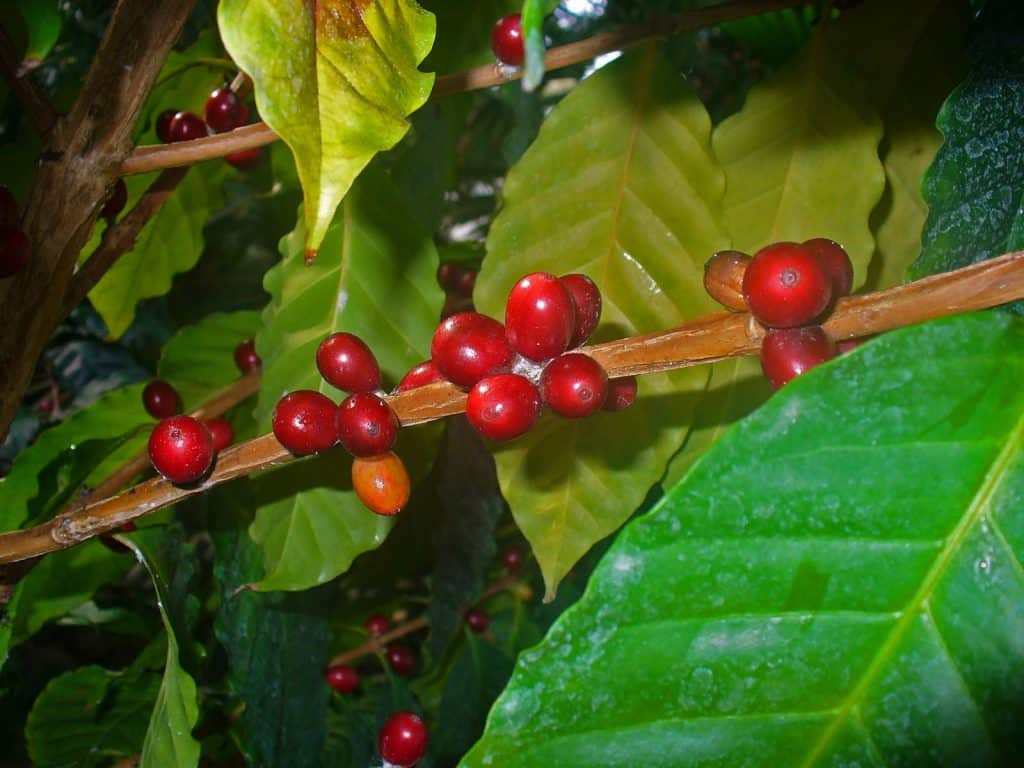
Coffea Arabica cherries. Photo: H. Zell.
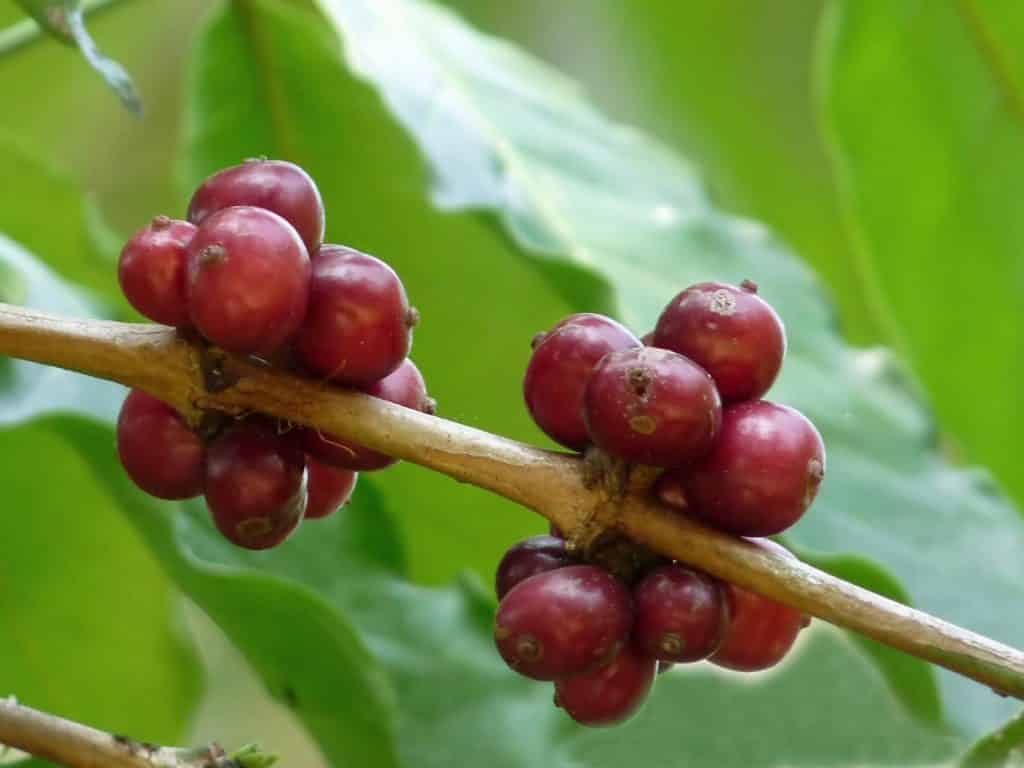
Coffea Canephora cherries. Photo: Jee & Rani Nature Photography.
The coffee beans, which you can think of as the seed of the coffee cherry, are also different. Green and roasted arabica coffee beans are long, oval and flat on one side, compared to robusta roasted coffee beans, which are shorter and much rounder.
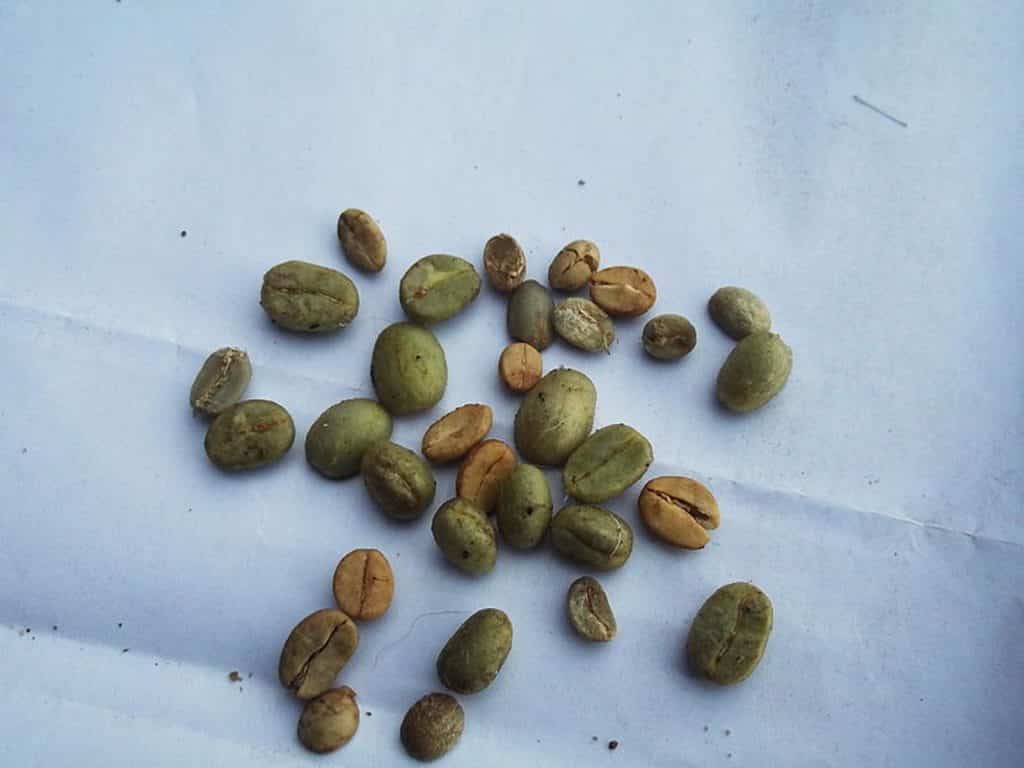
Green Arabica beans. Photo: Yercaud Elango.
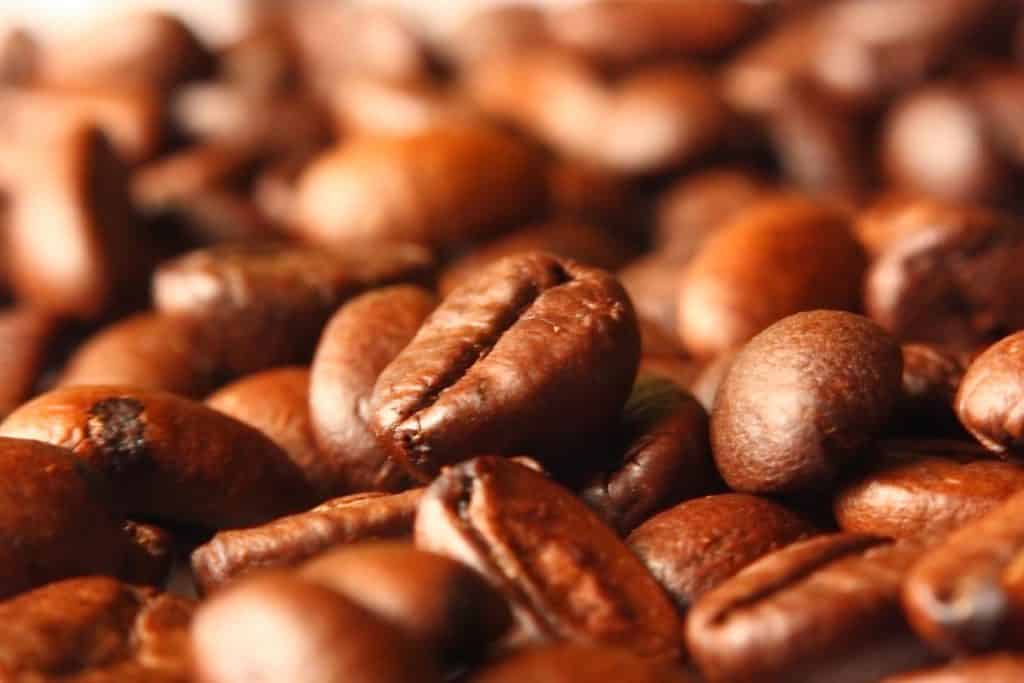
Roasted Arabica beans. Photo: Ruben Alexander
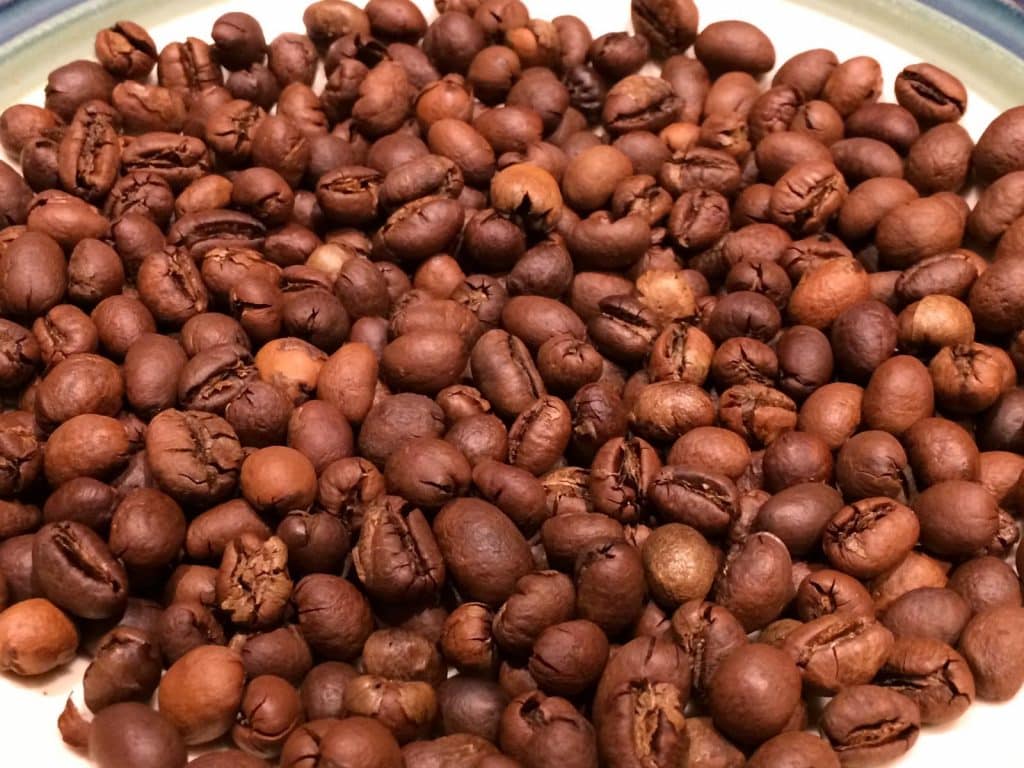
Roasted Robusta Beans. Photo: Carter Brown
These external, visible differences are the manifestation of many differences in the chemical composition of the arabica and robusta coffee beans and, as a consequence, of the coffee brewed with them. The most important differences are in caffeine levels, acidity and taste. Let’s take a look at these differences up close.
Arabica Vs. Robusta: Caffeine Levels
Many studies have shown that robusta beans have higher caffeine content than arabica beans. In fact, they have about 60% more caffeine, which for some people can be the difference between a light boost of energy and the afternoon jitters. The average caffeine concentration in green arabica coffee beans is around 1.4%, while in green robusta coffee beans it’s around 2.2%. This difference in caffeine concentration makes for several other differences in taste and health benefits, which we’ll get into in detail below.
Arabica Vs. Robusta: Acrylamide Levels
A 2010 study by Rita Alves proved that coffee contains acrylamide, which is a known carcinogen. The acrylamide levels are low, but regardless of that, it’s always advisable to minimize exposure to such substances. That study demonstrated that arabica beans contain half the acrylamide content of robusta beans, and that those acrylamide levels could be lowered even more by using dark roasted coffee and quick brewing times.
Arabica Vs. Robusta: Acidity levels
When speaking of the acidity in foods and beverages, there is an important distinction to point out: acidity from a chemistry standpoint is different from acidity from a taste standpoint. In other words, a highly acidic food or drink doesn’t always taste acidic/bitter in the mouth. Taste acidity is related to the presence of bitter compounds our tongue associates with certain acidic foods, while chemical acidity is a measure of the concentration of certain types of compounds (ions) in a solution. Ugh, chemistry!
Fortunately, you don’t need to understand much about chemical acidity aside from how it’s measured: on the pH scale. The pH scale, which ranges from 0-14, determines whether something is acidic, basic/alkaline or neutral. If the pH value is 7, the solution is neutral (like water); if it’s less than 7, it’s acidic; and if it’s greater than 7, the solution is basic. The lower the pH, the more acidic the solution is.
Having cleared that up, let’s get back to our coffee beans.
Coffee is an acidic beverage with a pH in the range of about 5-6. This is due to the high concentration of a mixture of different organic acids, among which is a family of acids called chlorogenic acids (CGAs). Robusta beans have a higher pH (less acidic) than arabica beans because they have lower levels of chlorogenic acid. The roasting process destroys part of the CGA content in coffee, releasing a series of alkaline compounds that raise its overall pH, though not enough to raise it above neutral. This is why dark roasted coffees are often easier to drink: the longer roasting process means they have more alkaline compounds and are easier for the body to digest.
Arabica Vs. Robusta: Difference in Taste
Though arabica beans have higher chemical acidity, things flip when it comes to taste acidity:
- Arabica beans produce a softer, less acidic coffee, largely because of their lower levels of caffeine. Caffeine has a very bitter taste, which is the reason most people perceive coffee brewed from robusta as more acidic than arabica coffee because, as mentioned before, robusta has more caffeine in it. This is true regardless of the fact that arabica is actually less “chemically” acidic than robusta.
- Arabica beans are more aromatic. If you compare the pictures of roasted arabica and roasted robusta beans shown above, you’ll notice that the arabica beans are shiny and oily while robusta beans look dry. This is because arabica beans have nearly twice the content of natural oils (lipids) as robusta beans. These natural oils give roasted arabica beans a more pleasant aroma, and also improve the overall taste.
- Arabica beans are sweeter than robusta beans. Arabica coffee has almost twice the natural sugar content of robusta, which gives it a sweeter note that’s more pleasant on the tongue.
These are the main reasons why arabica beans are superior to robusta beans, and they also explain why most cheap or instant coffee is made from robusta beans. Robusta beans make a less appealing cup of coffee, and on the global market, they’re less valuable. The best specialty coffees in the world, including our wild kopi luwak, are all made with arabica coffee beans.
Arabica Vs. Robusta: Price
International prices for green arabica and robusta beans are quite different. As of May 2018, arabica coffee was priced at $2.99 per kilogram on the global markets, 52% higher than robusta beans, which priced at $1.96 per kilogram.
Where are Arabica and Robusta coffee beans grown?
Coffee plants, in general, are grown in tropical climates within 1,000 km north or south of the equator. Even though the coffee plants originated in Africa, today they’re cultivated throughout every tropical region of the world.
The map below shows the distribution of coffee production by type of bean. Light green represents arabica production, dark green represents robusta, and medium green represents countries where both varieties are produced.
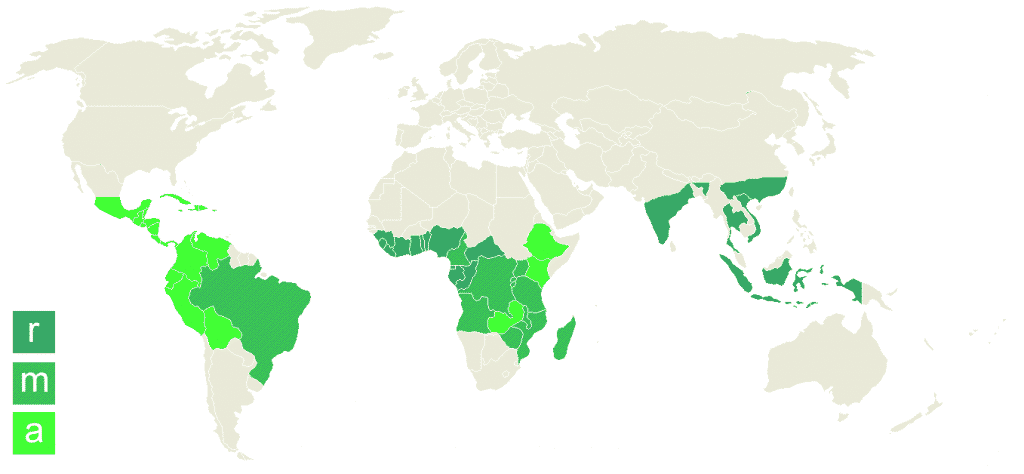
r = Cultivation of coffea robusta, m = Cultivation of both types of beans, a = Cultivation of coffea arabica
As reported by the USDA in 2017, Brazil is the world’s leading coffee producer, covering almost 33% of total production. Vietnam produces around 18%, while Colombia and Indonesia, where we source our organic kopi luwak, collectively make up another 16%.
The 95 million bags of arabica coffee beans are produced in:
- Brazil: 40.5 million bags
- Colombia: 14.6 million bags
- Ethiopia: 6.5 million bags
- Honduras: 6.5 million bags
- Remainder: Central and South America plus parts of Africa and Asia.
The 64 million bags of robusta coffee beans are produced in:
- Vietnam: 27 million bags
- Brazil: 11 million bags
- Indonesia: 9.6 million bags
- India: 4 million bags
- Remainder: Mostly African countries.
In Brazil, the world’s biggest coffee producer and exporter, arabica beans are produced in the southeastern regions of the country, while robusta beans are produced in the central and western regions.
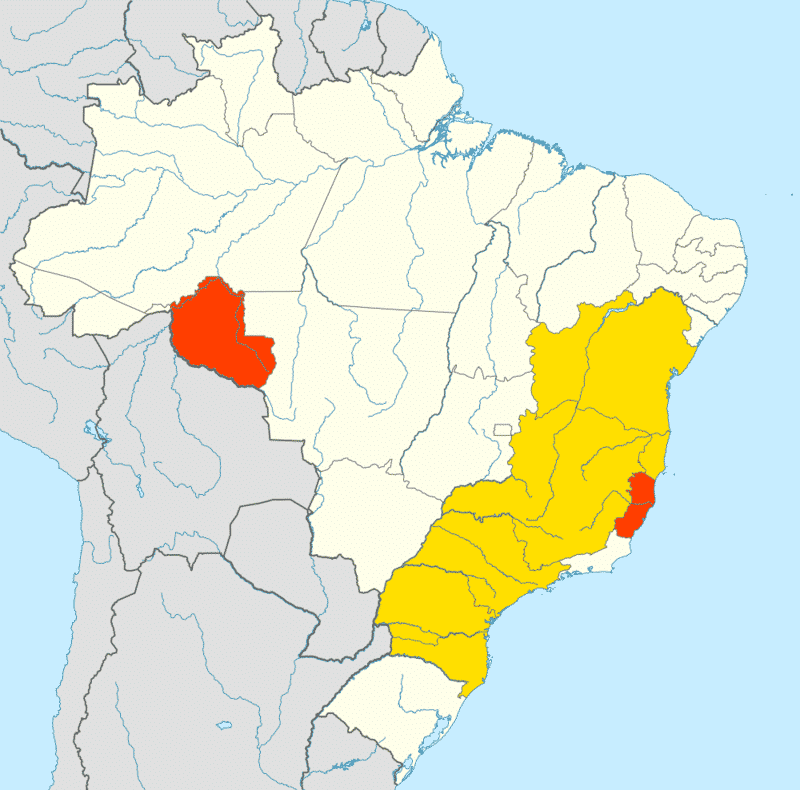
Brazil’s coffee growing regions by type. Yellow is arabica, orange is robusta
If you’re looking for the best arabica beans in the world, look no further than Pure kopi luwak. It has all of the benefits of arabica coffee, plus many more taste and health benefits of its own. Our kopi luwak is 100% pesticide-free and collected from wild Asian palm civet cats, ensuring an ethical, sustainable cup of joe.

